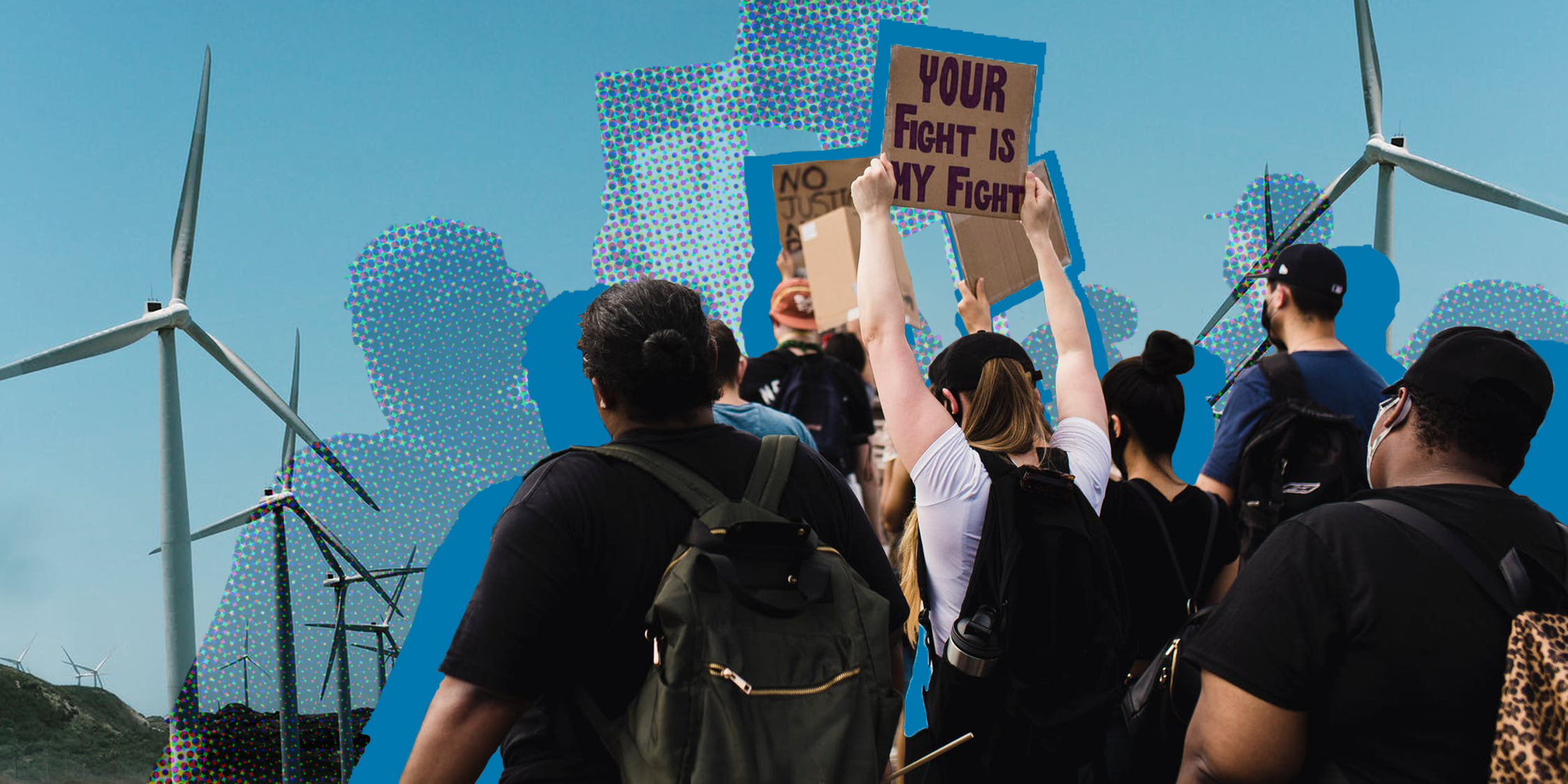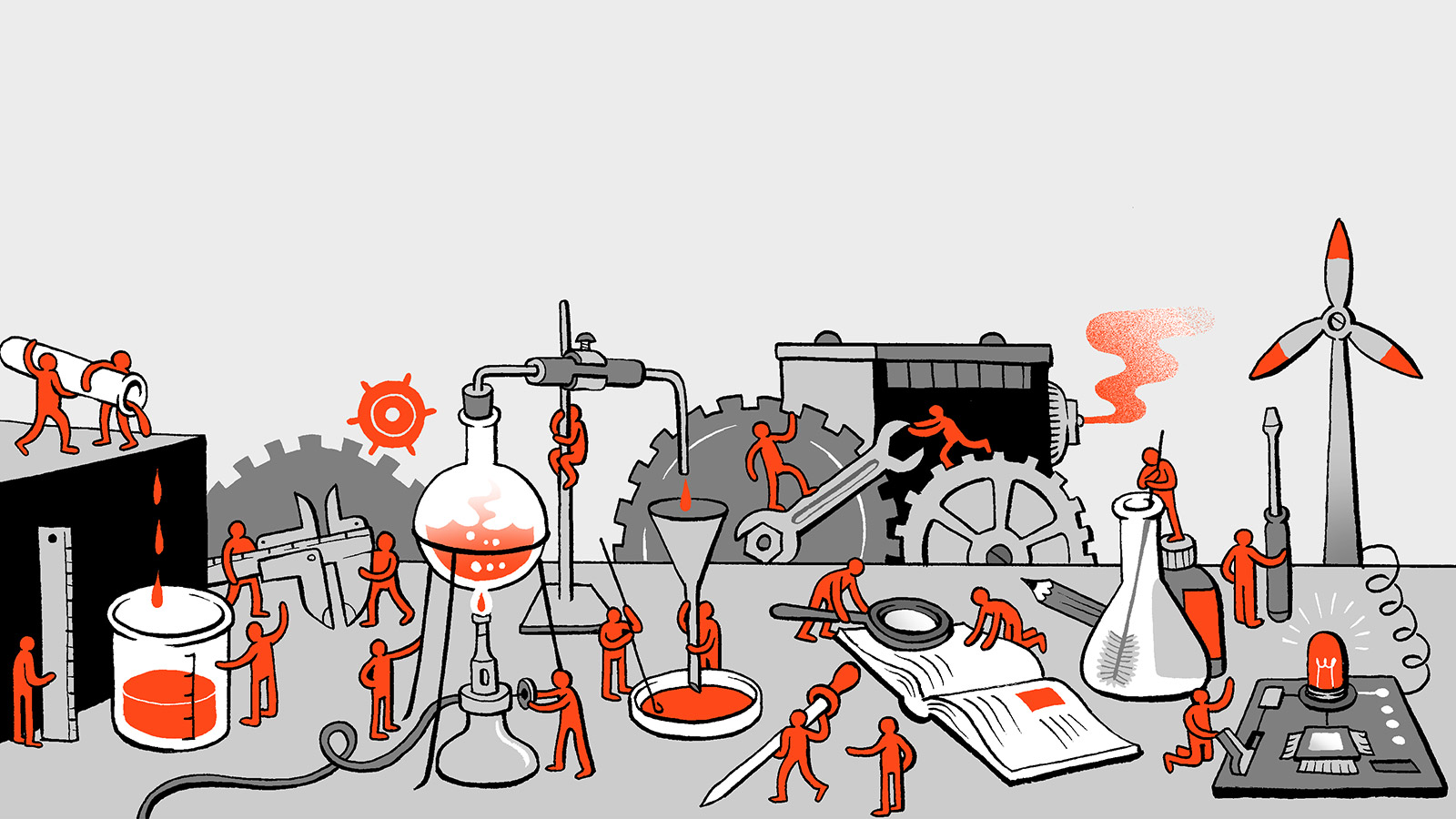Dignity Over Dumping: The Fight for Climate Justice and a Just Transition for Sanitation Workers
By Zakia Elliott, Alison Kenner, & Morgan Sarao
Volume 23, number 2, People’s Green New Deal

“I’ve said this before and I’ll say it a million times. One of the problems I think with sanitation is that nobody actually puts the physical thought to trash… They don’t know what we go through, they just know, I got up, I went to work, I came home, my trash was gone.”1
As the Green New Deal prompts discussions about investments in clean energy infrastructure and workforce, workers are fighting for rights in a changing climate. Many workers are serving their communities through increasingly difficult conditions as global temperatures rise, and as extreme weather, toxic pollution, and infectious disease intensify. Time and again, the divide between the labor and environmental movements is tested by a key aspect in realizing a fossil-free, climate resilient future: a just transition. This transition, whether driven nationally or locally, requires a recommitment to the needs of workers.2
On July 20, 2019, public sector sanitation workers partnered with Philadelphia Climate Works, a local climate justice coalition, and Drexel University’s Philadelphia Health & Environment Ethnography Lab in a focus group to describe environmental hazards and their hopes for better on-the-job protection, compensation, and recognition amidst a changing climate. To the fourteen sanitation workers who, after dumping truckloads of residential waste in 100-degree weather, traveled from all over the city to discuss these issues, the solution was clear: we must value people over profit to see a shift toward justice.
Members of the public sector union, the American Federation of State, County and Municipal Employees (AFSCME) District Council 33, Local 427, await the expiration of their current union contract with the City of Philadelphia and the subsequent fight for economic justice and improved health and safety protections. Little has changed to improve the conditions of sanitation workers even though the work has become increasingly more dirty, dangerous, and thankless. Moreover, current pay scales and workplace safety do not accurately reflect the amount of labor and bodily risk undertaken to complete the job. Climate change—and its accompanying heat waves, unpredictable weather events, and worsened air quality—further compounds the challenges impacting sanitation workers’ welfare.
Below we highlight issues brought up in this focus group and build on their testimonies to provide a blueprint for a transition toward environmental, climate, and workers’ justice in the municipal waste collection sector and community at large.
Electric Sanitation Trucks
Electric sanitation trucks have zero tailpipe greenhouse gas emissions. Transitioning Philadelphia’s fleet would help slash the Streets Department’s emissions contribution—14,387 tonnes of CO2 in 2017—to the City’s carbon footprint.3 Electric trucks also eliminate the health hazards associated with diesel emissions, directly improving the well-being of the workers operating the trucks.4 Studies on long-term occupational exposure to diesel pollution indicate that there is an elevated risk of lung cancer for truck and heavy equipment operators.5 Some studies have shown that drivers of heavy-duty diesel trucks are exposed to higher concentrations of particulate matter inside their truck cabs than the concentration outside of the truck.6 The rapid electrification of waste collection would advance occupational safety, environmental justice for overburdened communities, and climate mitigation.7
Updated Uniforms and Safety Gear
The Sanitation Division should make safety gear readily available, evaluate its performance, and make health and safety decisions in collaboration with workers who will ultimately be impacted. Proper gear can protect workers when extreme heat and unpredictable weather further increase risks of workplace injury.8 Workers are also exposed to elevated concentrations of fungi, bacteria and organic dust, and other hazardous materials.9 The City should invest more money into distributing uniforms with proper protective gear.
Administrative Health and Safety Policies
As temperatures increase in intensity, frequency, and duration, the City needs policies and safety standards to account for extreme heat.10 Sanitation workers complete their routes during the daytime, even during heatwaves, which exposes them to temperatures upwards of 115 degrees Fahrenheit inside trucks without air conditioning, which can lead to heat stress and heat stroke.11 The City should require working air conditioners in trucks and switch to evening waste collection during heatwaves and unhealthy air quality days.
Hazard Pay and Economic Justice
Economic justice is central to a just transition. Sanitation work is the nation’s fifth most dangerous occupation.12 Philadelphia sanitation workers are amongst the lowest paid service and maintenance workers with median salaries of $36,000.13 Workplace injury leads to physical pain, emotional turmoil, and enormous financial losses—impacts that extend beyond one person to their entire family and community.14 Sanitation workers should receive higher wages and enhanced benefits or hazard pay comparable to other high risk positions within the City.15 The consequences of illness and injury are an enormous burden on the low-income and 90 percent black sanitation department workforce.16
Transparency, Education, and Training
Climate justice demands accountability, transparency, and self-determination. Sanitation workers ultimately want to move forward in their careers with a clear understanding of the risks and responsibilities. Workers desire comprehensive training, covering risks associated with heat-induced illness, needle pricks, hazardous waste, and long-term exposure to radiation. While some exposures related to municipal waste collection are inherent to the job, the onus for supplying safety equipment, training, and educating residents on safe disposal habits is with the City.
Omar Salaam, veteran sanitation worker and business agent for Local 427, underscored the exigency of a just transition movement and Green New Deal in his statements during the focus group: “I think that we’re so undervalued because after we’ve done this job, what we have in our quality of life is very poor. What we have left over after we give so much is very poor.” As the workers of Local 427 approach their contract negotiations, they remind us that labor is critical to a healthy and sustainable city, and that justice lies in prioritizing the safety and well-being of people above the bottom line.17 The benefits of improved conditions for sanitation workers extends beyond this workforce: it sets the standard for how all people should be treated. In a world impacted by climate change, a just transition is not complete until all of us can live and work with dignity.
References
- The title of this piece is in reference to the “Green Economy Chat ‘n Chew” community workshop titled “Dignity Over Dumping,” which brought residents of Centennial Parkside Community Development Corporation to discuss litter and dumping issues and introduced the Sanitation Workers campaign to the public. The meeting was facilitated by Nora Elmarzouky and Russell A. Hicks, Climate Justice Fellows with POWER, and Zakia Elliott, Program Manager of Philadelphia Climate Works on January 28, 2019 in Philadelphia, PA. All quotes from anonymous sanitation workers during a focus group with members of AFSCME Local 427, interviewed by Alison Kenner,together Philadelphia, PA, July 20, 2019. The oral histories collected from the workers of AFSCME DC 33 Local 427 is a collaboration with Professor Alison Kenner of Drexel University’s Philadelphia Health & Environment Ethnography Lab and Philadelphia Climate Works, a local climate justice coalition that formed with the mission to move the City of Philadelphia to combat climate change by justly investing in its workforce and its impacted communities.
- Climate Justice Alliance, “The Just Transition Alliance Definition of a Just Transition and Just Transition Principles,” https://climatejusticealliance.org/wp-content/uploads/2018/06/Just-Transition-Alliance-Just-Transition-Principles.pdf.
- City of Philadelphia Alternative Fuels Analysis Report, June 30, 2018, 3, http://files.dep.state.pa.us/energy/Office%20of%20Energy%20and%20Technology/OETDPortalFiles/GrantsLoansTaxCredits/AlternativeFuelsIncentiveGrant/AFTA/City%20of%20Philadelphia.pdf.
- “Electric Trucks and Buses,” Union of Concerned Scientists, September 2018,https://www.ucsusa.org/sites/default/files/images/2018/09/electric-buses-trucks.pdf?_ga=2.43106214.2013523241.1555005345-1698867230.1555005345.
- Alan C. Lloyd & Thomas A. Cackette, “Diesel Engines: Environmental Impact and Control,” Journal of the Air & Waste Management Association 51, no. 6 (2001): 809-847.
- Diane Bailey, Zach Goldman, and Maria Minjares, “Driving on Fumes: Truck Drivers Face Elevated Health Risks from Diesel Pollution,” December 2007,https://www.nrdc.org/sites/default/files/driving.pdf.
- Matt de la Houssaye, “Re-Inventing the Garbage Truck,” Global Green, December 2015, 5, https://static1.squarespace.com/static/5548ed90e4b0b0a763d0e704/t/5a06268b8165f5c9f8d2abfe/1510352529108/Re-Inventing+the+Garbage+Truck+12.3.15+DRAFT+For+Comments.pdf.
- Brenda Jacklitsch, W. Jon Williams, Kristin Musolin, Aitor Coca, Jung-Hyun Kim, Nina Turner, “Occupational Exposure to Heat and Hot Environments: Revised Criteria 2016,” Department of Health and Human Services Centers for Disease Control and Prevention, National Institute for Occupational Safety and Health, 2016, p. v. https://www.cdc.gov/niosh/docs/2016-106/pdfs/2016-106.pdf.
- Anne Mette Madsen et al, “Waste Workers’ Exposure to Airborne Fungal and Bacterial Species in the Truck Cab and During Waste Collection,” The Annals of Occupational Hygiene 60, no. 6: (2016): 651-68.
- Jacklitsch et al., “Occupational Exposure to Heat and Hot Environments,” 127.
- Jacklitsch et al., “Occupational Exposure to Heat and Hot Environments,” 47, 52.
- Bureau of Labor Statistics, “National Census of Fatal Occupational Injuries in 2018,” US Department of Labor, December 17, 2019, https://www.bls.gov/news.release/pdf/cfoi.pdf.
- Juliana Feliciano Reyes, “‘Black lives matter at work’: Philly sanitation workers rally for safer conditions on the job,” The Philadelphia Inquirer, June 9, 2020, https://www.inquirer.com/jobs/labor/sanitation-workers-protests-philadelphia-20200609.html?fbclid=IwAR2kj6KzRIwfFRvWIDZTxHUDdaA6Cpem6YN9UnmJzFNKmt-Az4wB5YAWaDM.
- Occupational Safety and Health Administration, “Injury and Illness Prevention Programs White Paper,” United States Department of Labor, January 2012, https://www.osha.gov/dsg/InjuryIllnessPreventionProgramsWhitePaper.html#footnote1.
- City of Philadelphia Office of Human Resources, “Philadelphia Civil Service Regulations, 6. Pay Plan,” January 22, 2020, https://www.phila.gov/personnel/webregs/reg06.htm.
- Avi Wolfman-Arent, Ximena Conde, and Zachariah Hughes, “Philly sanitation workers demand PPE and hazard pay; vigil for justice held in Trevose,” WHYY, June 9, 2020,https://whyy.org/articles/city-sanitation-workers-protest-their-treatment-demand-ppe-hazard-pay/?fbclid=IwAR17yW78yxOchCdzKpKI5vMXSX8d5-9YDjzuRbiotCAjfbEz89i5Fsrq00g.
- For a more detailed analysis of the concerns of AFSCME DC 33 Local 427 and their demands, visit phillyclimateworks.org/focus-areas/sanitation-workers-oral-histories-project/.





